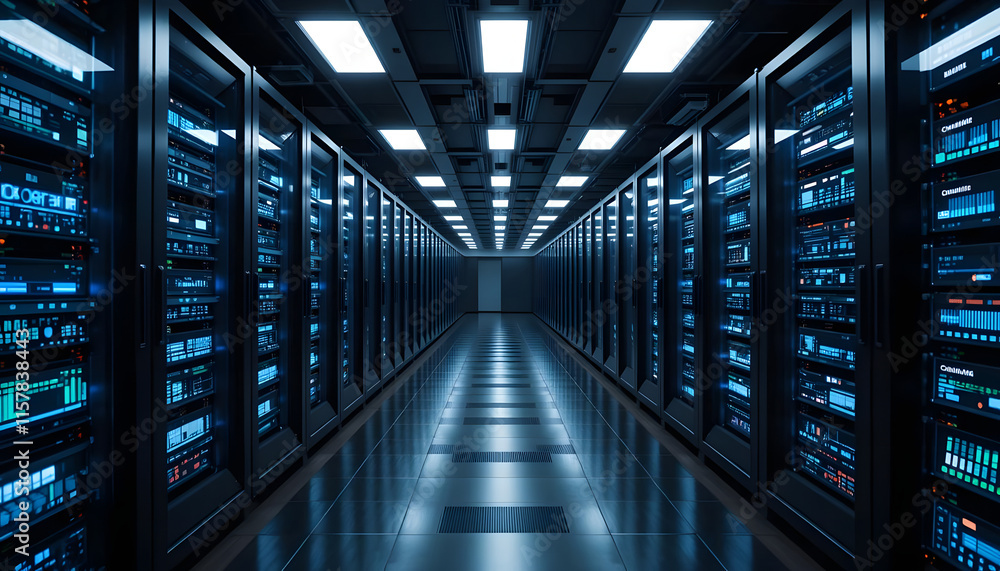|
Informative

.svg)

Building a data center is one of the most resource-intensive projects in construction. These facilities must deliver high uptime, support enormous computing power and adapt to emerging technologies like AI - all while staying on schedule and within budget.
Whether you’re planning a modular edge facility or a billion-dollar AI-ready campus, cost control begins well before you break ground. Here’s a comprehensive guide on how to build a data center efficiently, avoid the most common budget pitfalls and meet investor and operational expectations.
Many cost overruns are caused by shifting requirements. Every change after design approval ripples into procurement delays, subcontractor rescheduling and wasted material orders.
Questions to answer before finalizing your scope:
Tip: AI data centers have different demands than traditional ones - planning for power density, cooling efficiency and compute scaling from day one prevents costly retrofits later.
The cost of building a data center depends heavily on facility type, location and workload requirements. According to Uptime Institute and CBRE, modular or edge facilities typically range from $5 million to $25 million. Hyperscale builds - the kind used by major cloud providers - can cost anywhere from $200 million to over $500 million. At the top end, AI-optimized campuses often exceed $1 billion in investment, especially when designed for high-density compute and advanced cooling systems.But these numbers only tell part of the story. Other major cost categories include:
Pro tip: Treat cost tracking as a live process - static spreadsheets often miss emerging risks, especially in projects exceeding 18 months.
Typical build times:
Factors that can delay delivery:
Fast-track method: Overlap design and early construction stages where possible, but only with solid change management processes in place.
1. Scope creep - uncontrolled design or feature changes after sign-off.
2. Vendor silos - separate systems for scheduling, budgeting and documentation create communication gaps.
3. Unrealistic contingency - setting contingency too low (<5%) can leave no room for inflation or unforeseen issues.
4. Ignoring permitting timelines - in some regions, environmental and zoning approvals can take 6-9 months before site work begins.
5. Lack of real-time cost visibility - manual reports often arrive too late to prevent overruns.
If you’re asking how to build an AI data center, the answer is: design for density and flexibility. AI workloads require:
Skipping these in early design phases can result in $10M-$50M retrofits just a few years later.
Disconnected spreadsheets, emails and file shares slow down large-scale projects. A connected platform like INGENIOUS.BUILD consolidates:
Why it matters:
On billion-dollar builds, even a 1% cost variance can mean millions. Real-time tracking helps identify cost exposures early, keeping investor trust and project momentum.
How much does it cost to build a data center in 2025?
From $5-$25M for modular or edge builds, $200-$500M+ for hyperscale, and $1B+ for AI-optimized campuses. Costs vary by size, location and technical needs.
How long does it take to build a data center?
Usually it takes 6-12 months for modular, 18-24 months for hyperscale, and 24-36 months for complex AI facilities. Permitting, utilities and design changes are the biggest delay factors.
How to build an AI data center?
Design for high compute density from day one - this means supporting liquid or immersion cooling, reinforced power redundancy and scalable fiber connectivity. Incorporate modular layouts so you can expand GPU clusters without major redesigns. Also, factor in AI-specific network architectures (like low-latency interconnects) and ensure your facility’s power and cooling can handle future-generation chips, not just today’s hardware.
What’s the most common cause of budget overruns?
Scope changes and poor vendor coordination - both of which can be mitigated by defining requirements early and using a connected construction management platform.